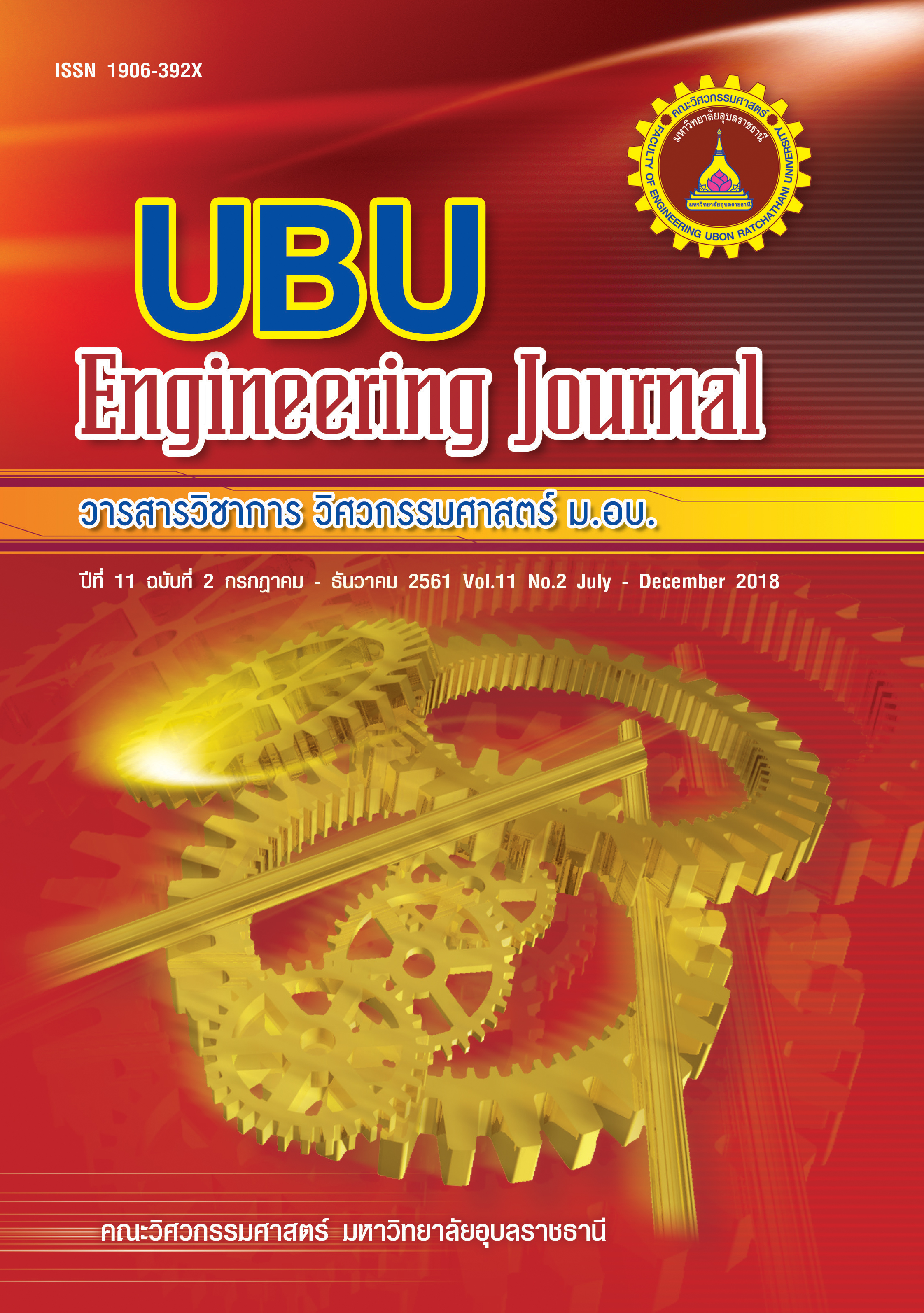การศึกษากระบวนการตกตะกอนของน้ำในโรงงานผลิตน้ำประปาต่อปริมาณการใช้พลังงาน
Main Article Content
Abstract
Clarification is the turbidity removal process of water treatment plant. The objective of this paper was to study the factors affecting on energy consumption in order to control energy saving strategy. These factors were raw water turbidity in the range of 26–40 NTU and production rate in the range of 3.76–5.20 m3/sec. Clarifiers were sludge blanket and sludge recirculation clarifier. Experimental results found that the raw water turbidity was not significantly affect to energy consumption, while the production rate was significantly affect to energy consumption. Sludge blanket clarifier provided lower energy consumption than sludge recirculation clarifier about 31–37%. Subsequently, the operating pattern in production rate can be arranged to decreased energy consumption. The results showed that it can be reduced about 5.24 % of energy saving of clarification process about 688,207 Baht per year.
Article Details
References
[2] ศราภรณ์ อัษฎกช. การจัดการพลังงานในโรงงานผลิตน ้า บางเขน. วิทยานิพนธ์ สาขาวิชาเทคโนโลยีการจัด การพลังงาน คณะพลังงานและวัสดุ มหาวิทยาลัย เทคโนโลยีพระจอมเกล้าธนบุรี. 2545.
[3] Vadasarukkai YS, Gagnon GA. Application of lowmixing energy input for the coagulation process. Water Research. 2015; 84: 333–341. [4] ทิวาภรณ์ มีธะระ. การศึกษาระบบการจัดการพลังงาน ไฟฟ้าของโรงงานผลิตน ้าประปา กรณีศึกษา การประปา ส่วนภูมิภาคสาขาชลบุรี. วิทยานิพนธ์ สาขาวิชา วิศวกรรมไฟฟ้า ภาควิชาครุศาสตรอุตสาหกรรมและเทคโนโลยี มหาวิทยาลัยเทคโนโลยีพระจอมเกล้าธนบุรี. 2556.
[5] Benedicts, A. et al. Operational energy-efficiency improvement of municipal water pumping in California. Energy. 2013; 53: 237–243.
[6] ศุทธิวัต ปฏิภาณวัฒน์. การจัดท้าแผนที่สัญจรเทคโนโลยี ในกระบวนการผลิตน ้าประปา โรงงานผลิตน้ าบางเขน การประปานครหลวง. วิทยานิพนธ์ สาขาวิชาวิศวกรรม อุตสาหการ ภาควิชาวิศวกรรมอุตสาหการ คณะ วิศวกรรมศาสตร์ จุฬาลงกรณ์มหาวิทยาลัย. 2554.
[7] Bohorquez J, Saldarriaga J, Vallejo D. Pumping pattern optimization in order to reduce WDS operation. Procedia Engineering. 2015; 119: 1069–1077.
[8] Scarpa F, Lobba A, Becciu G. Experditious pump rescheduling in multisource water distribution network. Procedia engineering. 2015; 119: 1078– 1087.
[9] Mo W, Wang H, Jacobs JM. Understanding the influence of climate change on the embodied energy of water supply. Water Research. 2016; 95: 220–229.
[10] ทวีศักดิ์ วังไพศาล. วิศวกรรมการประปา. พิมพ์ครั้งที่ 2. กรุงเทพฯ: ส้านักพิมพ์จุฬาลงกรณ์มหาวิทยาลัย; 2557.
[11] วัชระ มั่งวิทิตกุล. กระบวนการและเทคนิคการลด ค่าใช้จ่ายพลังงาน ส าหรับอาคารและโรงงาน อุตสาหกรรม. กรุงเทพฯ: เรียล ยูพาวเวอร์; 2554.
[12] Plappally AK, Lienhard JH. Energy requirements for water production, treatment, end use, reclamation, and disposal. Renewable and Sustainable Energy Reviews. 2012; 16: 4818– 4848.
[13] Yao M, Nan J, Chen T. Effect of particle size distribution on turbidity under various water quality levels during flocculation process. Desalination. 2014; 354: 116–124. [14] American Water Works Association (AWWA), American Society of Civil Engineers (ASCE). Water treatment plant design. 4th ed. New York: McGRAW-Hill; 2005

